Front Lines to Tight Lines
Disabled Vets Go Fishing...
“Well, it was really just an accident,” Bud Lilly observed, the brim of his Trout U cap seeming to pinch the sun tight against the dark cast of the old wooden water tower. “It was a job I was doing for Fish, Wildlife and Parks (FWP). I was scouting for a new fishing access just the other side of that highway bridge downstream,” he said, gesturing with his chin, “and when the ranch owner said “no way,” I wandered over here and had what some might call an inspiration. You know,” he added, “there’s no other access to the Gallatin for several miles and, I realized, no access at all for the disabled and, in particular, disabled vets. That was a real shame I realized, and that was when I called Tim.”
There are only a very few people you might know who are big enough to carry both sides of an attitude as comfortably as Tim Crawford. Tim is both gruff and considerate, opinionated yet reflective, mild-mannered, but intolerant of fools or incompetents. He is no-nonsense, sizes up people quickly, and you don’t often get a second chance. He has a few bucks.
Within days, Bud Lilly, aka “world-renowned fly fisherman” and Tim Crawford, a Bozeman-area businessman and rancher, stood cap-to-cap on a small rise of the Gallatin River in Logan, Montana, both now focused on the landscape’s potential. The problem was more than FWP’s “no river access,” Bud explained. “There is really no planned access anywhere for handicapped.” And that meant that there was no access for disabled vets, in particular, in one of the greatest fly-fishing regions in the world. Yet here on the banks of the Gallatin River was a nice piece of land, 2,000 feet of river frontage and a vision of a fishing and picnic park. It seemed the perfect place. “We’ll buy it,” said Crawford.
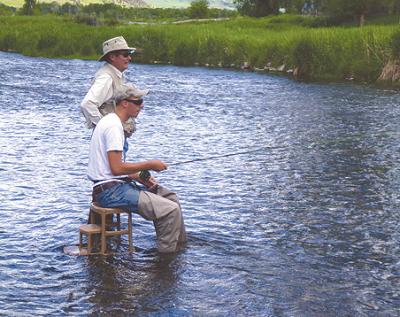
The “buy” was an old subdivision that fronted a gnarly and decrepit boarding house on the banks of the river. There was a single acre of 18 home lots, subdivided in 1895, which were not likely to be built on in anyone’s lifetime. It would give both Lilly and Crawford a chance to take a small idea and turn it into a big dream for legions of wounded veterans. As Thoreau once said, ““Many men go fishing all of their lives without knowing that it is not fish they are after.” Bud Lilly and Tim Crawford knew what they were after. But it would take an army.
The Veterans Administration reports that it treats more than 5.7 million veterans who are classified as “patients,” nearly 300,000 of whom are “100% disabled,” including 1 million who are amputees. More than 3.3 million of the injuries are “service-related,” ranging from everyday accidents that can befall anyone, anytime, to the unimaginably horrific damage of war—the stuff of nightmares. With 22 million veterans in the United States, and an appreciative population, disabled vets are held in special esteem. Without regard to political ideology, everyone supports disabled vets. No exceptions.
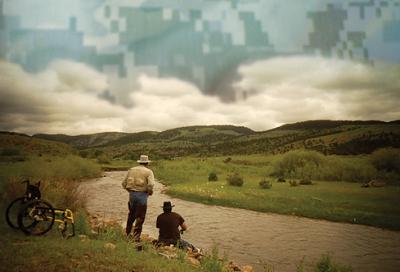
And, as it happened, everyone (it seemed) did show up to help Lilly and Crawford. The first recruit of the fishing access army was Esther Lilly, who spent two years negotiating Crawford’s purchase of the land from the Campbell family (who were ultimately generous in the sale price). The State of Montana joined with the American Legion in accepting Crawford’s donation of the land for creation of the fishing park. An adjoining Gallatin County park to the east became a welcome buffer of open space, where one can still conjure the chuff and clank of passenger trains which once passed nearby on their way to Chicago or Seattle. The resulting three-acre parcel, with more than a quarter-mile of river frontage, was soon razed of the boarding house and 124 tons of clutter and junk, tidied by a platoon of volunteers, planned by a landscape architect, planted by a local nursery and pledged for maintenance and park improvements by the State’s Department of Fish, Wildlife and Parks and the American Legion.
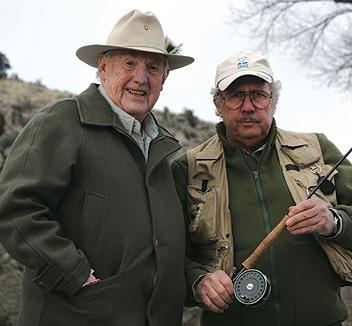
The new park was soon given a name, the “Veterans Fishing Park;” plans were made for improvement of the FWP’s new access, with a disabled-user-friendly ramp and a facility for special equipment and gear. A parking area would be added, as well as a family-and-friends area for picnicking and socializing. Things were taking shape nicely, and the volunteer army had executed according to the battle plan. There was a shared sense of mission and accomplishment. As Crawford wryly opined, “it seemed like a better idea than a house in Cancun.”
Lilly, meanwhile, solicited donations from businesses big and small, fly-fishing shops and suppliers with the help of this magazine; also the American Legion Post of Belgrade agreed to coordinate the assistance of the neighboring Legion posts of Manhattan, Three Forks, and Bozeman in an ongoing effort. Merv Gunderson, past commander of the Belgrade post, is still working to coordinate the resources of all 800 members of the four posts to create a support structure and an endowment, which will insure that the park continues to be well-maintained and self-sustaining. “Our goal,” said Merv, “is to make the park a permanent source of recreation and enjoyment for our disabled vets. We want it to always serve the purpose Bud had in mind.”
With the park dedication scheduled for May 16th of 2011, another round of access-improving, habitat-forming, erosion-controlling, watershed-protecting work is planned. New walkways and ramps will be dressed with native trees, fruit-bearing shrubs, flowers and nutritional grasses. Disabled vets, their families, and other handicapped fly-fishers will enjoy an enhanced fishing environment, spilling over with rainbows and browns while white-tail deer and mountain sheep cavort in the bluffs on the opposite bank.
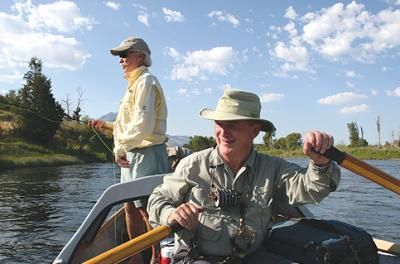
Bud Lilly knows a good fishing spot when he sees it, or maybe it’s just when he feels it. “The veterans park,’ Lilly says, “is not just a tribute to these special men and women, it’s a legacy for fly-fishing and everything that goes with it—the quality of the water speaks to the quality of life. We need to preserve Montana’s waterways by honoring them just like we honor our vets. It can’t be any other way.”
Bud looked up and down the Gallatin River, his mind launching drift boats filled with smiling vets into its healing waters. “You know,” he said, “it’s just the right thing to do.”
After a full day of fishing, Veterans Park users can drift down Frontage Rd. to Manhattan where they can grab some of Bud Lilly’s favorite pie and ice cream at the Garden Café. The Café now has the “Hatchmaster’s Gallery,” a permanent display of flies tied by world experts, as well as flower photos by Tim Crawford and insect paintings by Dr. George Roemhild. A double-scoop and the gallery’s memorabilia are the perfect way to add another hour of fish tales to the perfect Montana day.
If you would like to offer your support in time or money to the Veterans Fishing Park,
please contact:
Gary White
American Legion Dept. of Montana
(406) 324-3989
[email protected]
Thanks to this army of Fishing Access volunteers
The Fishing Access Army
American Legion
Cashman Nursery
Tim & Kathy Crawford
Gallatin County Commission
Mervin Gunderson, American Legion
Joe Gutkoski, Landscape Architect
Bud & Esther Lilly
Mike Lilly
Land of Magic Restaurant
Montana Dept.
of Fish, Wildlife & Parks
Montana Rail Link
Montana Trust Foundation
Greg Poncilett
Joe Sample
HOPA Bonnie Satchetello- Sawyer and volunteers
...and many, many more.
“Bud always seems to look at things from the fish’s point of view. As a result, his conservation philosophy is unyielding: he is committed to protecting and preserving the rivers and streams that make the West one of the greatest trout fisheries in the world. Catch-and-release fishing is imperative to this end. “I haven’t kept a fish for probably thirty years,” Bud says, at once reflecting his personal philosophy and a sensible preservation strategy. He’s been promoting responsible environmental practices since 1950, long before it became fashionable to do so.”
Mike England, Outside Bozeman








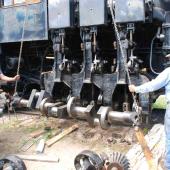


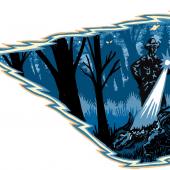
Leave a Comment Here